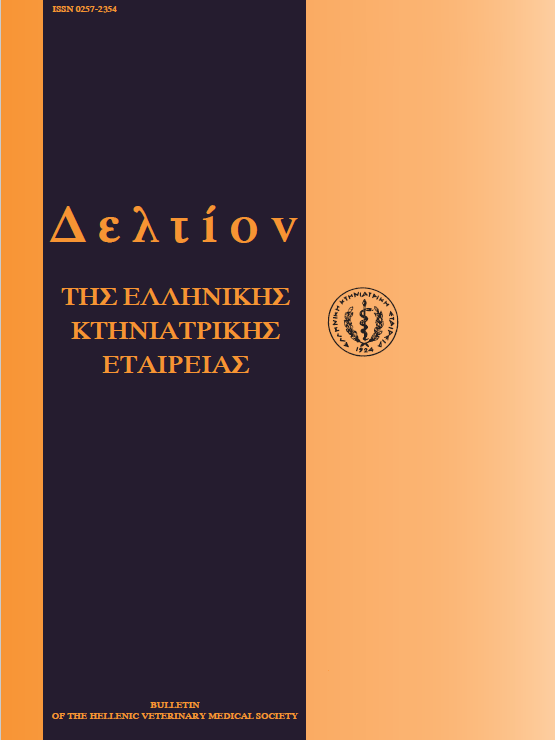Pleural effusions in the dog. Etiology, Pathogenesis, Diagnosis and Treatment
Abstract
Accumulation of fluid (pleural effusion) in the pleural space of dogs is a relatively common clinical entity in the everyday practice. These can result from variable causes, such as right-sided heart failure, pericardial disease, hypoalbouminemia, neoplasia, heartworm disease, diaphragmatic hernia, bleeding disorders, traumatic or idiopathic causes. Diagnosis is based on history, clinical findings, laboratory tests, thoracocentesis, thoracic radiography and/or ultrasonography. Therapeutic approach depends on the etiology and the clinical condition of the affected dog. In dogs presented with severe respiratory distress, and after the confirmation of pleural effusion with thoracic radiography, thoracocentesis is performed to stabilize the animal's condition. If indicated, surgical management is attempted. Conservative therapy includes intravenous fluid and electrolyte replacement, antibiotics administration and chest tube placement in refractory cases. Moreover, pleurodesis may be indicated in chronic relapsing cases.
Article Details
- How to Cite
-
KLADAKIS (Σ.Ε. ΚΛΑΔΑΚΗΣ) S. Ε., ADAMAMA - MORAITOU (Κ. Κ. ΑΔΑΜΑΜΑ-ΜΩΡΑΪΤΟΥ) K. K., & RALLIS (Τ.Σ. ΡΑΛΛΗΣ) T. S. (2018). Pleural effusions in the dog. Etiology, Pathogenesis, Diagnosis and Treatment. Journal of the Hellenic Veterinary Medical Society, 51(4), 262–271. https://doi.org/10.12681/jhvms.15684
- Issue
- Vol. 51 No. 4 (2000)
- Section
- Special Article

This work is licensed under a Creative Commons Attribution-NonCommercial 4.0 International License.
Authors who publish with this journal agree to the following terms:
· Authors retain copyright and grant the journal right of first publication with the work simultaneously licensed under a Creative Commons Attribution Non-Commercial License that allows others to share the work with an acknowledgement of the work's authorship and initial publication in this journal.
· Authors are able to enter into separate, additional contractual arrangements for the non-exclusive distribution of the journal's published version of the work (e.g. post it to an institutional repository or publish it in a book), with an acknowledgement of its initial publication in this journal.
· Authors are permitted and encouraged to post their work online (preferably in institutional repositories or on their website) prior to and during the submission process, as it can lead to productive exchanges, as well as earlier and greater citation of published work.



